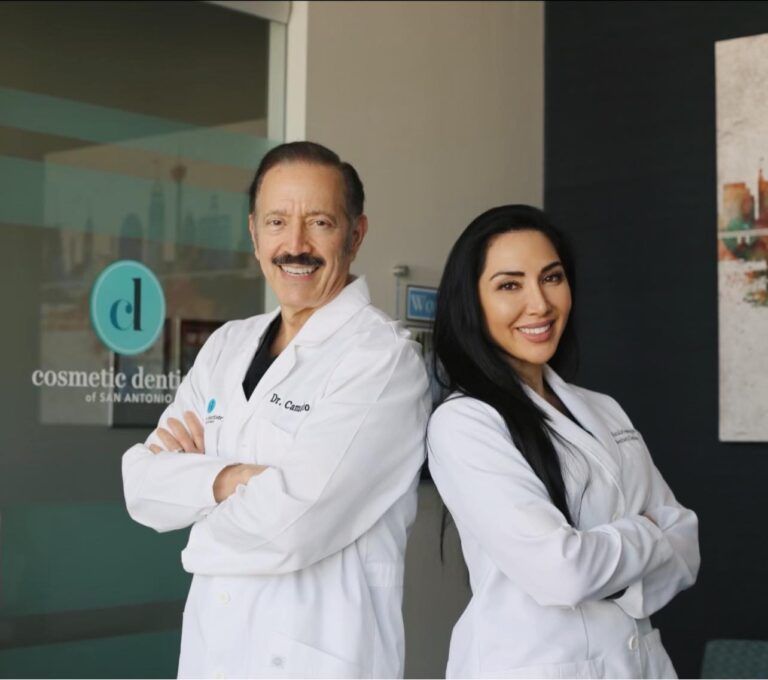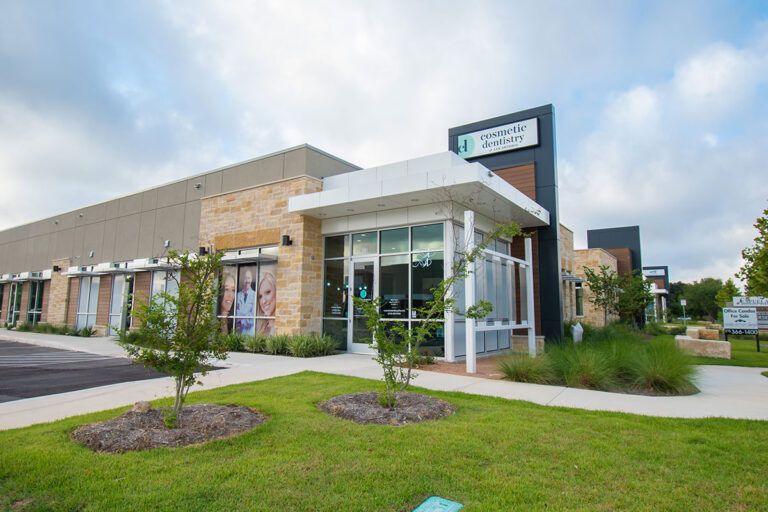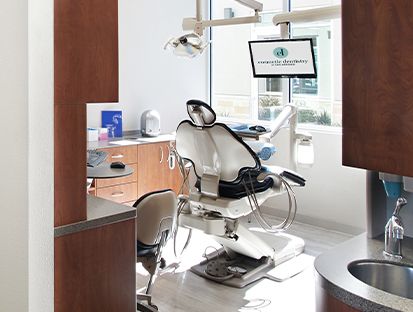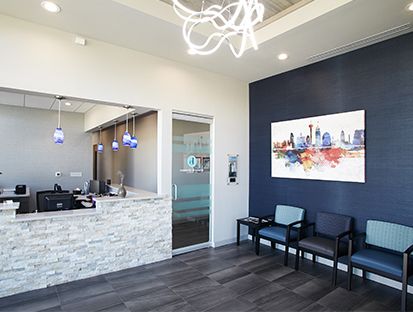In today’s world, a bright and confident smile is often seen as a key element of personal and professional success. Cosmetic dental procedures have become increasingly popular, offering a wide range of solutions to enhance the appearance of teeth and improve overall oral aesthetics. However, one of the most common concerns for individuals considering these procedures is the cost involved. Understanding the financial aspect of cosmetic dental treatments is crucial for making informed decisions and planning accordingly. In this blog, we will delve into the various factors that influence the cost of cosmetic dental procedures, provide a detailed cost breakdown, and offer tips on how to manage and reduce expenses, ensuring you can achieve the smile of your dreams without breaking the bank.
In This Blog:
- Overview of Common Cosmetic Dental Procedures
- Factors Influencing the Cost
- Detailed Cost Breakdown
- Additional Costs to Consider
- Ways to Manage and Reduce Costs
- Questions to Ask Your Dentist
Overview of Common Cosmetic Dental Procedures
Cosmetic dental procedures encompass a variety of treatments aimed at improving the appearance of your teeth, gums, and overall smile. Each procedure addresses specific aesthetic concerns and varies in terms of complexity, duration, and cost. Here’s a look at some of the most common cosmetic dental procedures:
Teeth Whitening
Teeth whitening is one of the most popular and straightforward cosmetic dental procedures. It involves the use of bleaching agents to remove stains and discoloration, resulting in a brighter and more radiant smile. This can be done in-office for immediate results or with take-home kits for gradual whitening.
Veneers
Veneers are thin, custom-made shells designed to cover the front surface of teeth. Made from porcelain or composite resin, veneers can correct a wide range of cosmetic issues such as chipped, stained, misaligned, or irregularly shaped teeth. They offer a long-lasting and natural-looking solution to improve your smile.
Dental Implants
Dental implants are a permanent solution for missing teeth. They involve the surgical placement of a titanium post into the jawbone, which acts as a root for a replacement tooth. Implants not only restore the function and appearance of teeth but also help maintain the structure of the jawbone.
Crowns
Crowns, or caps, are used to cover and protect damaged or decayed teeth. They restore the tooth’s shape, size, and strength, as well as improve its appearance. Crowns can be made from various materials, including porcelain, ceramic, metal, or a combination of these.
Bonding
Dental bonding involves applying a tooth-colored resin to the tooth’s surface to repair minor chips, cracks, or gaps. The resin is shaped and polished to match the surrounding teeth, providing a quick and cost-effective way to enhance your smile.
Orthodontics (Braces and Invisalign)
Orthodontic treatments, such as traditional braces and Invisalign, correct misaligned or crooked teeth and bite issues. While braces use metal brackets and wires, Invisalign utilizes a series of clear, removable aligners. Both options help achieve a straighter and more aesthetically pleasing smile over time.
Understanding these common cosmetic dental procedures is the first step in determining which treatment is right for you and what to expect in terms of outcomes and investment. Each procedure offers unique benefits, and consulting with a dental professional can help you make an informed decision based on your specific needs and goals.
Factors Influencing the Cost
The cost of cosmetic dental procedures can vary widely based on several factors. Understanding these factors can help you better anticipate potential expenses and make informed decisions about your dental care. Here are the key factors that influence the cost of cosmetic dental procedures:
Type of Procedure
The type of cosmetic dental procedure you choose significantly impacts the cost. Simple treatments like teeth whitening or bonding are generally less expensive compared to more complex procedures such as dental implants or full-mouth restorations.
Materials Used
The quality and type of materials used in the procedure play a crucial role in determining the cost. For example, porcelain veneers are typically more expensive than composite resin veneers due to their durability and natural appearance. Similarly, high-quality crowns or implants made from premium materials will cost more.
Dentist’s Expertise and Reputation
The experience, specialization, and reputation of the dentist performing the procedure can influence the cost. Highly skilled and reputable cosmetic dentists may charge higher fees for their services, reflecting their expertise and the quality of care they provide.
Geographic Location
The cost of cosmetic dental procedures can vary depending on your geographic location. Dental practices in urban areas or regions with a higher cost of living generally charge more than those in rural areas. Additionally, local demand for cosmetic dentistry can affect pricing.
Complexity of the Case
The complexity of your dental case also affects the cost. For instance, extensive dental work requiring multiple procedures or addressing severe cosmetic issues will be more expensive than minor corrections. The need for additional treatments, such as bone grafts for dental implants, can also increase the overall cost.
Technology and Equipment Used
Advanced technology and equipment used in cosmetic dentistry can impact the cost. Procedures involving cutting-edge techniques, such as digital smile design or laser dentistry, may come at a premium due to the investment in technology and the enhanced precision and results they offer.
Pre and Post-Procedural Care
The cost of cosmetic dental procedures often includes pre-procedural consultations and assessments, as well as post-procedural follow-up visits. Comprehensive care before and after the procedure ensures optimal results and can influence the overall cost.
By considering these factors, you can gain a clearer understanding of what contributes to the cost of cosmetic dental procedures. This knowledge will help you make more informed decisions and prepare financially for the investment in your smile.
Detailed Cost Breakdown
Understanding the specific costs associated with various cosmetic dental procedures can help you plan and budget effectively. Below is a cost breakdown for some of the most common cosmetic dental treatments:
| Procedure | Type | Cost Range (USD) |
| Teeth Whitening | In-Office Whitening | $300 – $1,000 |
| At-Home Whitening Kits | $100 – $400 | |
| Veneers | Porcelain Veneers | $925 – $2,500 per tooth |
| Composite Resin Veneers | $250 – $1,500 per tooth | |
| Dental Implants | Single Tooth Implant | $1,500 – $6,000 |
| Full-Mouth Restoration | $24,000 – $100,000 | |
| Crowns | Porcelain Crowns | $800 – $3,000 per tooth |
| Metal Crowns | $600 – $2,500 per tooth | |
| Porcelain-Fused-to-Metal Crowns | $500 – $3,000 per tooth | |
| Bonding | Dental Bonding | $100 – $400 per tooth |
| Orthodontics | Traditional Metal Braces | $3,000 – $7,000 |
| Invisalign | $3,500 – $8,000 |
This cost breakdown provides an overview of the average prices for common cosmetic dental procedures. Actual costs can vary based on individual circumstances, including the specifics of the dental practice, the complexity of the case, and any additional treatments required. By understanding these costs, you can better plan for your cosmetic dental needs and seek out the best options for your budget.
Additional Costs to Consider
When planning for cosmetic dental procedures, it’s essential to consider additional costs beyond the primary treatment expenses. These costs can add up and affect your overall budget. Here are some of the additional costs you should be aware of:
Initial Consultation Fees
Many dental practices charge a fee for the initial consultation, during which the dentist will assess your dental needs, discuss treatment options, and provide a cost estimate. Consultation fees can range from $50 to $300, depending on the dentist and the complexity of the consultation.
Follow-up Visits
After your initial procedure, follow-up visits are often necessary to monitor your progress and ensure optimal results. These visits may include adjustments, cleanings, or additional treatments. The cost of follow-up visits can vary widely but typically ranges from $100 to $300 per visit.
Maintenance and Upkeep
Some cosmetic dental procedures require ongoing maintenance to preserve results. For example, teeth whitening may need periodic touch-ups, and veneers may need replacement every 10-15 years. Maintenance costs can include professional cleanings, whitening sessions, or replacement of restorations, with prices ranging from $100 to $1,000 or more.
Potential for Additional Procedures
Depending on your specific dental condition, additional procedures may be required to achieve the desired results. For instance, before getting veneers or implants, you might need preparatory treatments such as orthodontics, gum contouring, or bone grafting. These preparatory treatments can significantly increase the overall cost, with prices ranging from a few hundred to several thousand dollars.
Insurance Coverage and Limitations
While most cosmetic dental procedures are not covered by dental insurance, some treatments that improve dental health might be partially covered. It’s crucial to check with your insurance provider to understand what is and isn’t covered, as well as any limitations on coverage. Knowing your insurance benefits can help you plan and budget more effectively.
Additional Cosmetic Enhancements
If you are aiming for a comprehensive smile makeover, you might opt for additional cosmetic enhancements such as gum reshaping, enamel shaping, or lip and facial fillers to complement your dental work. These enhancements can add to the overall cost, with prices ranging from $200 to $2,000 or more, depending on the procedures chosen.
By considering these additional costs, you can better prepare for the financial aspects of your cosmetic dental journey. This comprehensive understanding will help you avoid unexpected expenses and ensure you have a clear picture of the total investment required to achieve your desired smile.
Ways to Manage and Reduce Costs
The cost of cosmetic dental procedures can be significant, but there are several strategies to manage and reduce these expenses without compromising on quality. Here are some effective ways to make cosmetic dentistry more affordable:
Dental Insurance: What is Typically Covered?
While most cosmetic dental procedures are not covered by insurance, certain treatments that also have health benefits might be partially covered. For example, crowns or braces may be covered if they are deemed necessary for dental health rather than purely for aesthetic reasons. It’s essential to thoroughly review your dental insurance policy and discuss potential coverage with your provider.
Payment Plans and Financing Options
Many dental practices offer flexible payment plans and financing options to help spread the cost of treatments over time. Some options include:
- In-House Payment Plans: These are set up directly with the dental office, allowing you to make monthly payments.
- Third-Party Financing: Companies like CareCredit offer healthcare financing plans that can be used for cosmetic dentistry. These plans often come with low or no interest for an introductory period.
Discount Plans and Membership Programs
Dental discount plans or membership programs can provide significant savings on cosmetic procedures. These plans typically require an annual fee and offer discounted rates on a wide range of dental services, including cosmetic treatments. Check with your dentist to see if they offer or accept any such programs.
Timing and Bundling Procedures
Scheduling multiple procedures at the same time can sometimes reduce costs. Dentists may offer discounts for bundling treatments or completing them in fewer visits. Additionally, some practices have seasonal promotions or special offers, so timing your procedures to coincide with these can also save money.
Negotiating with Your Dentist
Don’t be afraid to discuss costs openly with your dentist. Many dentists are willing to work with patients to create a payment plan or offer a discount, especially for extensive treatments. Building a good relationship with your dental provider can lead to more flexible financial arrangements.
DIY Maintenance for Longevity
Maintaining good oral hygiene and following your dentist’s aftercare instructions can prolong the results of cosmetic procedures, reducing the need for frequent touch-ups or replacements. Invest in quality dental care products and follow a consistent routine to protect your investment.
By exploring these cost-saving strategies, you can make cosmetic dental procedures more accessible and affordable. Careful planning and open communication with your dental provider will help you achieve the smile you desire within your budget.
Questions to Ask Your Dentist
When considering cosmetic dental procedures, it’s essential to have a clear understanding of the process, costs, and expected outcomes. Asking the right questions can help you make informed decisions and ensure that you receive the best possible care. Here are some important questions to ask your dentist:
- What is Included in the Quoted Price?
- Are There Any Potential Additional Costs?
- What Are the Payment Options Available?
- How to Maximize Insurance Benefits?
- What is the Expected Longevity of the Results?
- What are the Risks and Benefits of the Procedure?
- Understanding both the potential benefits and risks associated with the procedure is essential. Can I See Before-and-After Photos of Similar Cases?
- What is the Recovery Process Like?
- How Experienced is the Dentist with This Procedure?
- Are There Any Alternatives to the Proposed Treatment?
By asking these questions, you can gain a comprehensive understanding of the cosmetic dental procedure, its costs, and what to expect. This information will empower you to make informed decisions and ensure you receive the best possible care for your dental needs.
Conclusion
Investing in cosmetic dental procedures can significantly enhance your smile and boost your confidence. Understanding the various factors that influence the cost, the potential additional expenses, and ways to manage and reduce these costs is essential for making informed decisions. By asking the right questions and exploring your financial options, you can plan effectively and achieve the smile you desire without unnecessary stress. Remember, the value of a beautiful, healthy smile goes beyond aesthetics—it contributes to your overall well-being and quality of life. So take the time to consult with your dentist, explore all available options, and make a well-informed decision that suits both your dental needs and your budget. Your journey to a brighter smile is an investment in yourself, and it’s worth every effort.
Dr. Edward Camacho earned his DDS from the University of Texas Health Science Center. He believes in continuing his education and training and that a dentist’s education should never cease. As a result, he has received extensive training in aesthetic dentistry, restorative dentistry, dental implant placement, orthodontics, computerized dentistry, and laser dentistry. Dr. Camacho’s continued education and completed cosmetic procedures has helped him establish himself as one of San Antonio’s leading cosmetic dentists. He has completed thousands of cosmetic procedures over the span of his 40 year career.







